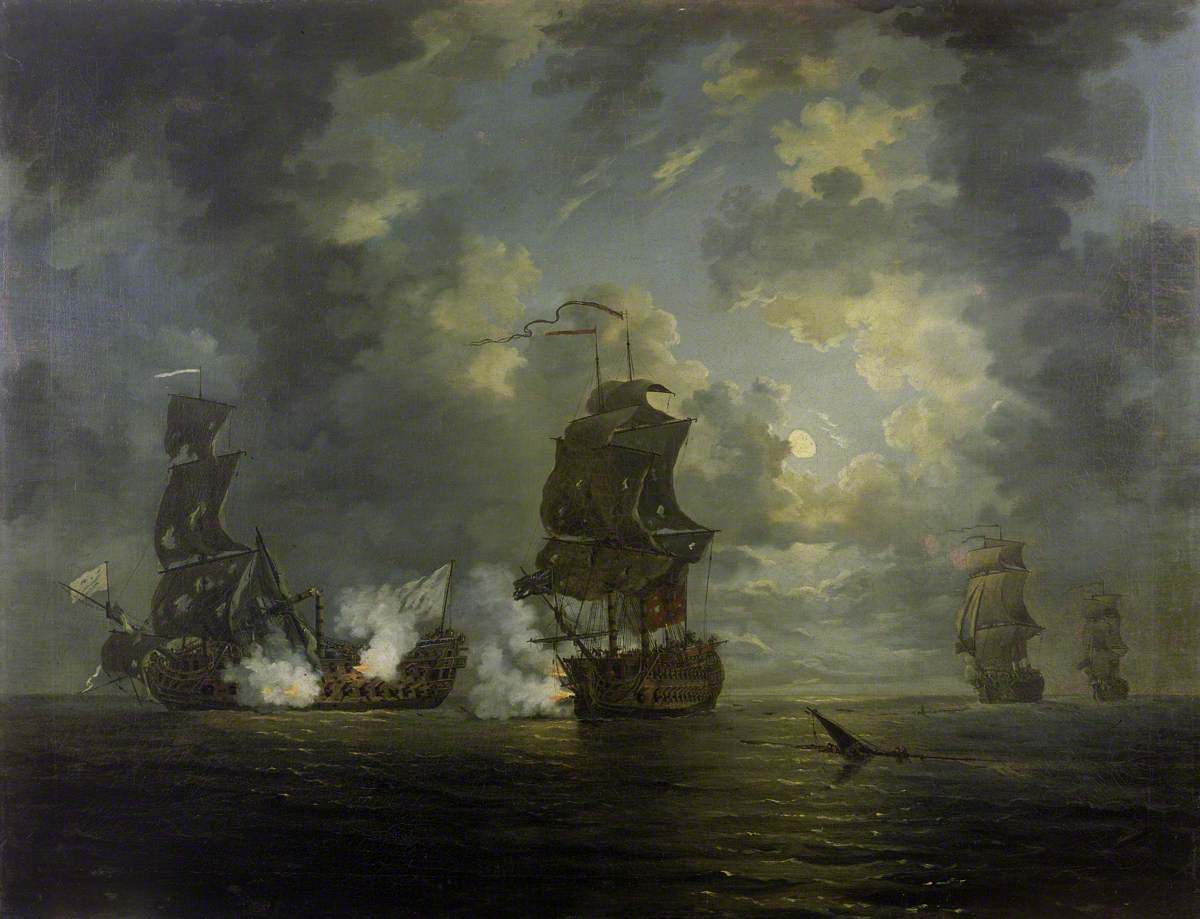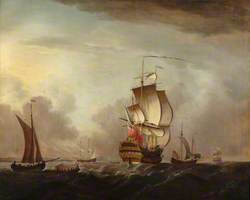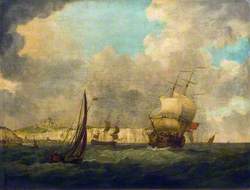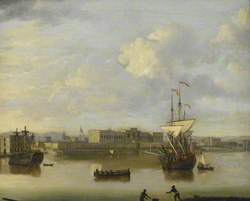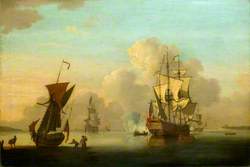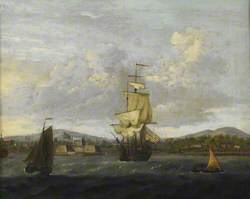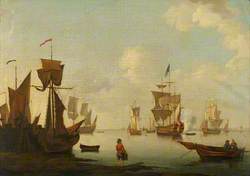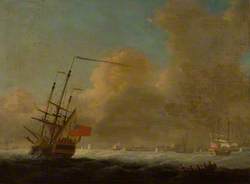How you can use this image
This image can be used for non-commercial research or private study purposes, and other UK exceptions to copyright permitted to users based in the United Kingdom under the Copyright, Designs and Patents Act 1988, as amended and revised. Any other type of use will need to be cleared with the rights holder(s).
Review the copyright credit lines that are located underneath the image, as these indicate who manages the copyright (©) within the artwork, and the photographic rights within the image.
The collection that owns the artwork may have more information on their own website about permitted uses and image licensing options.
Review our guidance pages which explain how you can reuse images, how to credit an image and how to find images in the public domain or with a Creative Commons licence available.
Notes
Add or edit a note on this artwork that only you can see. You can find notes again by going to the ‘Notes’ section of your account.
The 'Foudroyant' was a large and new 80-gun French flagship of a squadron under Admiral Duquesne. On 28 February 1758 she was on her way to relieve the French Commodore, de la Clue, at Cartagena when she was intercepted by Admiral Osborn with three British ships of the line, the 'Monmouth' and 'Hampton Court', both 64 guns, and the 'Swiftsure', 70 guns. The 'Monmouth' was the first of the separated British squadron to engage the 'Foudroyant', despite the disparity in force between the ships. The action began at 8pm and at about 9.30pm, the 'Monmouth's' commander, Captain Arthur Gardiner, was hit in the forehead by a piece of grape-shot. He was carried below and Lieutenant Robert Carkett assumed command. Shortly afterwards, the 'Monmouth' lost her mizzen, followed by the 'Foudroyant', which also lost her mainmast. By midnight, the Frenchman's fire had almost ceased and, on the arrival of the 'Swiftsure', which fired one broadside into her, she struck. The 'Monmouth' was unable to take possession of the 'Foudroyant' herself, since none of her boats would float and Captain Gardiner subsequently died from his wounds. 'Foudroyant' was taken into the Royal Navy after capture and during her working life was considered to be its finest two-decker.
The artist was a painter and draughtsman who worked as a Navy Office messenger in 1735. He was practising as a marine painter by the late 1740s, and regularly exhibited in the Free and Incorporated Societies of Artists from 1761. His work was an interpretation of ideas made popular in England by Willem van de Velde the Younger's, but shows an informed knowledge of English shipping.
Title
The Capture of the 'Foudroyant' by HMS 'Monmouth', 28 February 1758
Date
mid-18th C
Medium
oil on canvas
Measurements
H 71.1 x W 91.4 cm
Accession number
BHC0383
Work type
Painting
